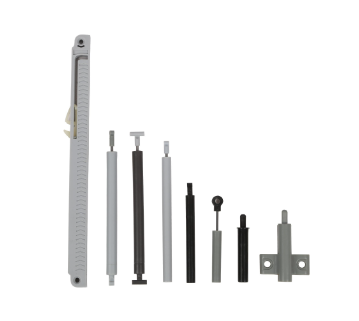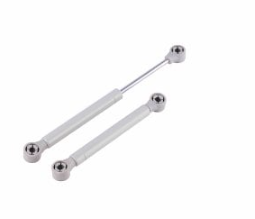If you are interested in our products ,please contact our team
An oil damper is a mechanical device (or hydraulic) that absorbs and damp shocks impulses. It is a hydraulic device that uses oil as the working fluid to damp shocks.
The thermal energy created is dissipated through the oil and to the surrounding housing – a primary process to help a damper work efficiently.
The design of oil dampers helps accommodate a range of forces and hence is available in linear, rotary, and eddy current versions.
Hence it is important one chooses the one that best suits the work to be done and you can navigate this all alone.
You will need to partner with reliable and trusted oil damper manufacturers for high-quality and durable products.

Oil dampers are frequently utilized as a component of the suspension system on a variety of vehicles, from rail to road.
They enhance the passengers' quality and comfort of the ride. Every time a bump or shock happens, there would be a constant oscillatory motion absent dampers.
In vehicles and trains, slight vibrations and abrupt movements still occur, but they are lessened by oil dampers.
In addition to providing a comfortable ride, dampers lessen shocks on the vehicle frames, extending their lifespan.
If the forces placed on the vehicle are not reduced, the structure will become more stressed, which will shorten its lifespan. Improved reliability and lower maintenance costs are two advantages of this.
Dampers in rail vehicles dampen the forces and relative motion between the bogie and the car body. To reduce the corresponding forces in their axes, the dampers take the shape of lateral and yaw dampers.
A bogie also features a primary damper that reduces vertical forces, which are crucial for ride quality.
Kinetic energy is transformed into thermal energy by a damper. Kinetic energy is produced by vibrations and abrupt movements that are caused by shocks and surface imperfections.
The twin-tube style of a damper is the most popular. A primary pressure tube and a reserve tube are the components of a linear twin-tube damper.
The type of oil used as the working fluid in dampers varies according to the required level of damping and heat loss; a more viscous fluid requires more force to compress.
The main sources of fluid flow are valves, which are activated by internal pressures in the fluid caused by compressive and rebound forces.
The pressure tube's bottom and the piston head are typically where the valves are found.
The fluid is compressed as the piston descends into the pressure tube. The valves in the piston head and at the base of the working fluid are opened by the fluid pressure, allowing fluid to flow.
Heat energy is produced as the fluid is pressurized and propelled through the valves, and it is subsequently released.
The piston head ascends through the pressure tube during the extension phase (rebound). The pressure tube experiences a partial vacuum due to the upward movement, which compels the valves at the pressure tube's bottom to open, enabling fluid from the reserve tube to enter.
The compression and rebound properties of the oil damper are governed by the valve configuration.
By altering the valve's makeup, for instance, the compression component of the motion might be made "softer" and the rebound portion "stiffer".
It is normal practice to alter the valves during an assessment to achieve the desired properties. By tightening or loosening screws on the springs, it is possible to change the pressure needed to open or close the valves.

A hydraulic device known as an oil damper helps to absorb pressure and effectively dissipate heat in the machine. It is very unique.
Due to the rapidly expanding market for oil dampers, it is crucial to work with a reputable oil damper manufacturer to obtain the best goods and services. Click here to view our extensive product ranges.